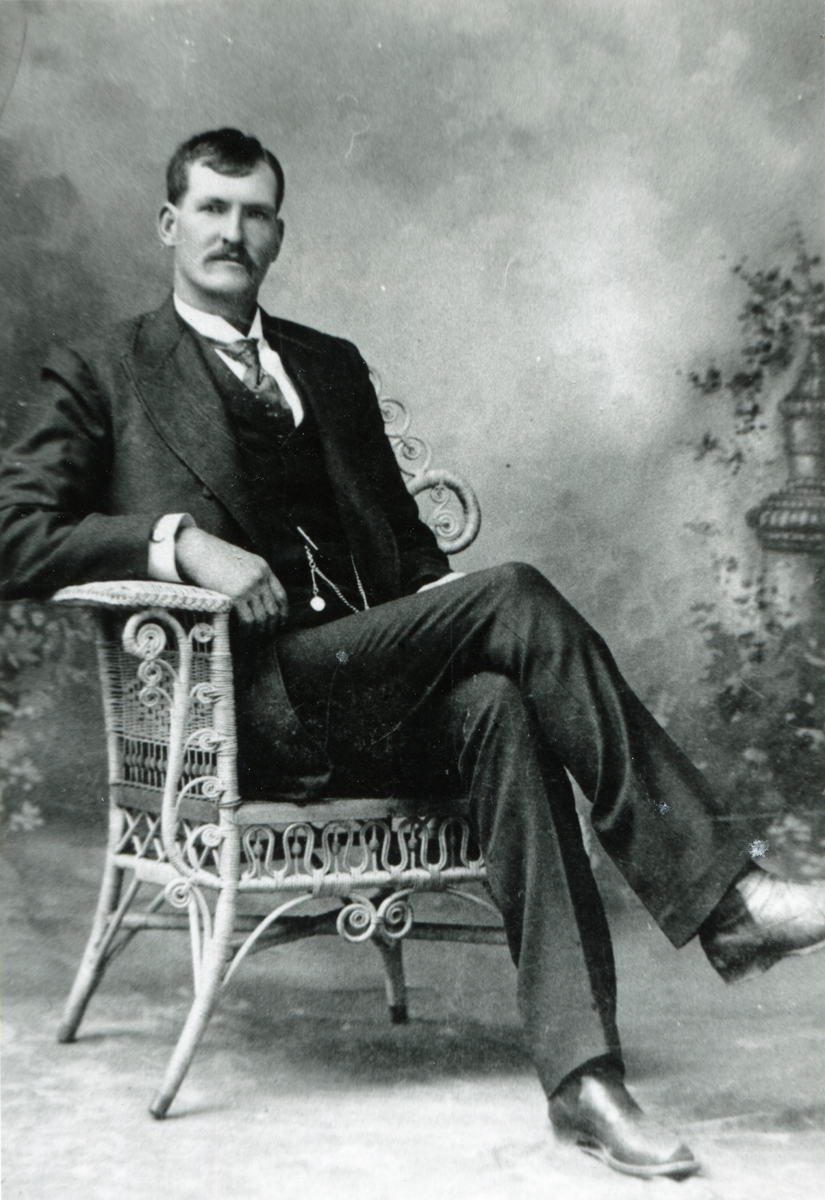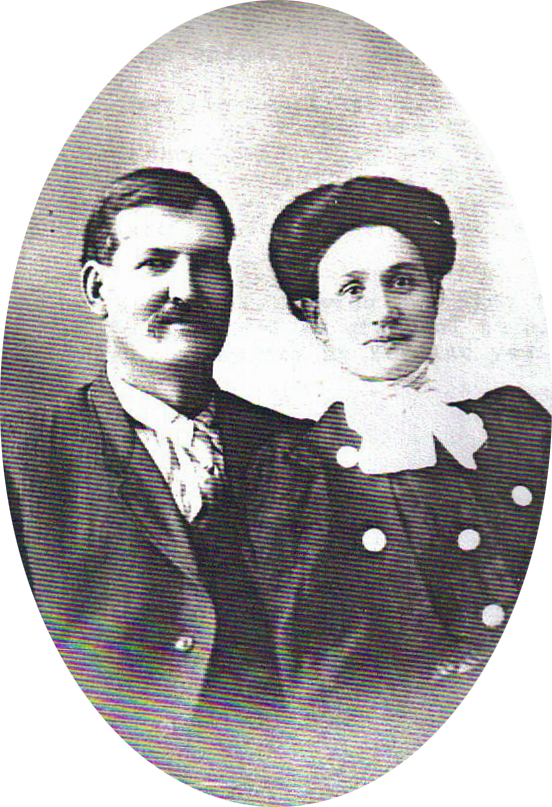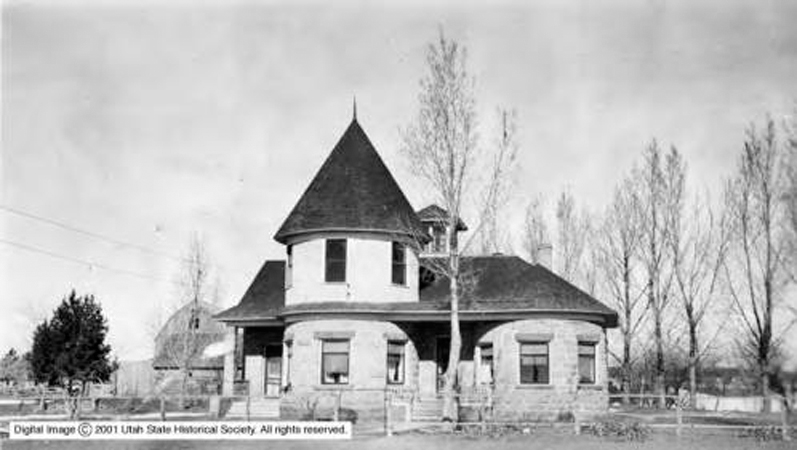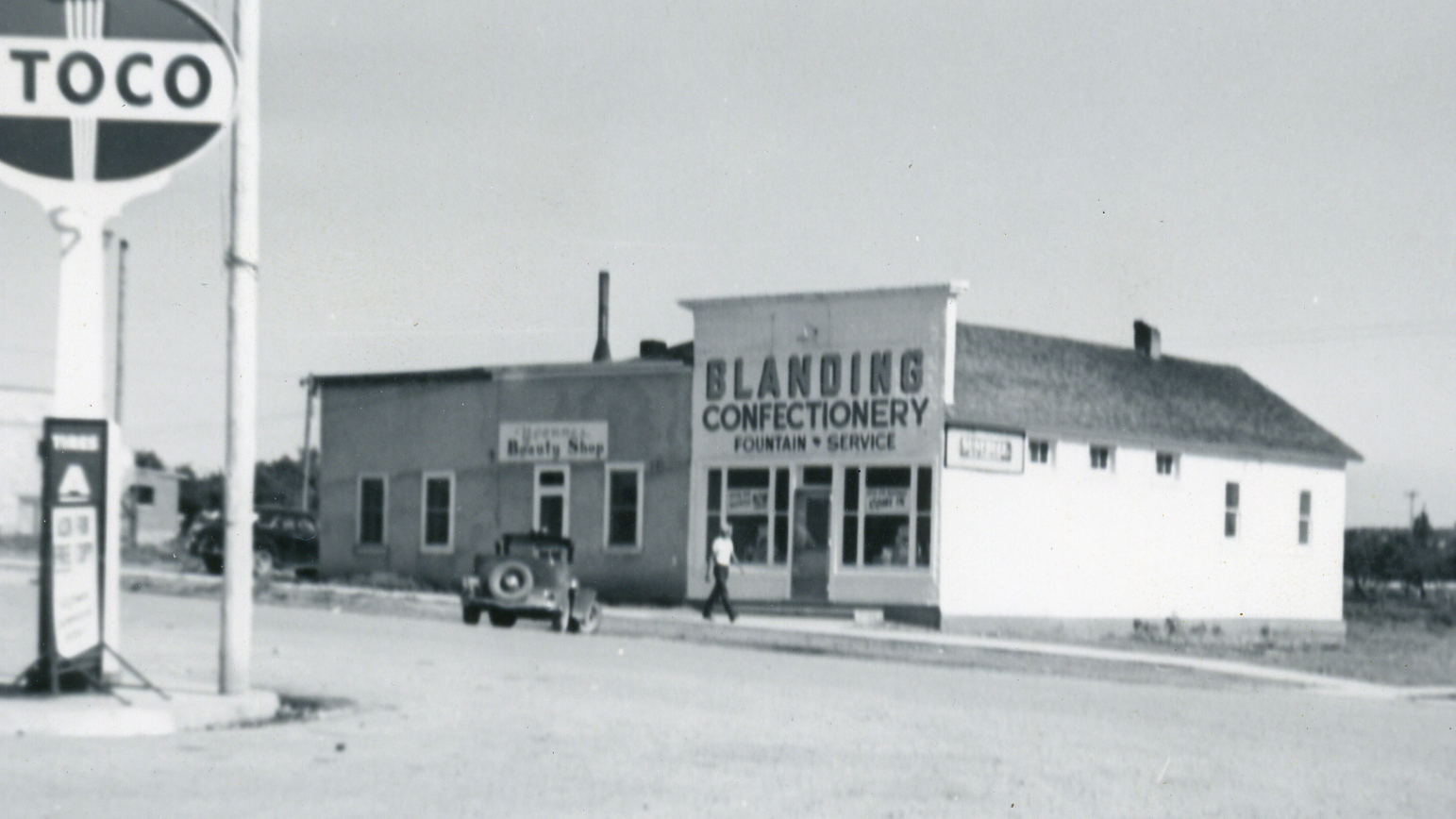Life Sketch of Jens Peter Nielson
Jens Peter Nielson
Born: 9 February 1862 at Parowan, Iron, Utah, USA
Parents: Jens Nielson and Kirsten Jensen
Married: Martha Jane Roberts 5 June 1903 at Farmington, San Juan, New Mexico, USA
Died: 28 December 1935 at Blanding, San Juan, Utah, USA
LIFE SKETCH OF JENS PETER (J.P.) NIELSON
by Hazel Biggs Meldrum
Jens Peter Nielson: Colonizer, Stockman, and Merchant
Jens Peter Nielson was born in Parowan, Iron County, Utah on February 9, 1862. His Danish parents,
Jens Nielson and Kirsten Jensen Nielson, were a polygamist family. Elsie was Jens’ first wife, and their
children were: Jens (deceased), Mary, and Julia. Kirsten, his second wife, was the mother of Jens b.
1858 (deceased), Hans Joseph b. 1860, Jens Peter b. 1862, Margrete Christina b. 1864, John b. 1866
(deceased), Francis b. 1869, Lucinda Diantha b. 1872, Caroline b. 1874, and Hyrum b. 1876 (deceased).
The third wife of Jens was Katharine. Their children were Uriah A., Freeman A., and Annetta.
Jens Peter’s boyhood and teen years were barren and austere. Much of his time was spent in the
wilderness herding sheep and cattle. He was very lonely.
Jens Peter accompanied his family on the arduous trek to colonize the San Juan region and helped in the
establishment of Bluff. Jay, a son, writes: “without a doubt Jens Peter drove one of Bishop Jens’ three
wagons down the 1800 foot precipice called the Hole in the Rock, on January 26, 1880 – fourteen days
before his 18th birthday.”
Arriving at their destination the Nielson family was destitute. Jens Peter took a team and wagon and left
for Durango, Colorado, to seek employment. With his summer wages he purchased food and clothing
for the family and returned to Bluff. When he arrived with the necessities he also brought a doll for
each of his two little sisters, Caroline and Lucinda. He remembered the previous Christmas when the
girls cried because there was nothing for them.
Jens did not know what the word “fear” meant. His 6’6’’ body demanded respect, but much more than
that, the demeanor of his inner calm strength, his fearlessness, his love and empathy for a man and
woman struggling to support a family, all combined in earning the respect of others.
Jens Peter traveled through the desolate Utah and Colorado country where he met the roughest of
characters. Most of the men carried one or two pistols, but Jens never carried or owned a gun. Still, he
had no fear of these men. He ate with them, slept in their bunks, and did business with them.
A daughter, Helene, writes: “My mother, Jennie Roberts, first saw my father, Jens Peter Nielson, when
she was a young girl. He had driven from Bluff to Mancos, Colorado to get a load of flour. Her father
was the miller at that time. Jens was 6 feet 6 inches tall and very strong. He attempted to show off for
the young giggling girls by increasing the load of flour one sack each trip to the wagon. He started out
with two, then three, then four, and then five at which time he dropped one in the ditch. Nevertheless,
the girls were very impressed, one being mother.”
Jens Peter filled and LDS mission to the Southern States. He was set apart by Jos. W. McMurrin on
October 18, 1899 and returned December 15, 1901.
Jens wintered with his sheep on Red Mesa and it was here he, once again, met Martha Jane Roberts
(Jennie). She attended BY Academy and was teaching school at Red Mesa. Jens loved to dance and he
and Jennie would attend the dances. A courtship ensued. They were married June 15, 1903 at
Farmington, New Mexico. It was Jennie’s 25th birthday and Jens was 41. They were sealed in the Salt
Lake Temple June 8, 1904.
The children of Jennie and Jens Peter Nielson are: Mary Kirsten b. 1904 (deceased), Helene Mildred b.
1905, Virginia b. 1908 (deceased), Lucinda May b. 1910, Caroline b. 1912, Jay P. b. 1913, and Margaret b.
1918. It was a family of four daughters and one son.
Jay P., his son, writes, “It became obvious to my father, Jens P. Nielson, that Bluff was too small to
accommodate his large frame, his large ambition, his large energy, his large vision, his large drive, and
hopefully a large family.” Consequently, Jens, Jennie, and two year-old Helene, filled their wagons and
traveled to the site of Grayson, later known as Blanding.
The Nielsons were the second family to move to this endless terrain of sagebrush, pine, and cedar trees.
Jens and Jennie each homesteaded 160 acres in the town area.
First they camped under a cedar tree, then moved to a cellar, then to the granary – and then on to the
rock home.
Dick Novis from Salt Lake City designed at built the home with local faced rocks and mud mortar.
Twelve-foot ceilings, turrets, and stained glass were in vogue at that time. The home had 24 windows,
22 doors (7 outdoors and 15 indoors). A square tower-well filtered light into the square dining room
adjacent to the round shaped parlor. Rock weighted hanging ropes opened the windows in the skylight
tower. Wall drawers held wood for stoves. A large kitchen with a wood-burning cook stove, a pantry
and adjacent cistern room with a pump, served the family. Hardwood floors throughout the house were
covered with Navajo and European style rugs. The parlor was furnished with a piano, a pedestal statue,
and a wind-up Victrola. (The house is now listed on the National Register for Historic Places.)
With the house came the “Out-house." It was located across the ditch at a spot about 75 feet away.
One had to cross the bridge to get to the toilet no matter what time of day or night, whatever the
weather. Helene, a daughter, writes: “One time I was in the outside toilet and every time I would
attempt to open the outside door to go out, then ‘Wham’, our big buck sheep would hit the door with
head and horns in all his strength. I was glad for the protection, but I became a little weary of my
confinement and could not make any one hear me. He kept me captive there for half a day and taught
me patience.”
Arriving in Blanding, Jens lost no time planting crops, gardens, and fruit trees. He obtained milk cows,
sheep, cattle, pigs, and chickens.
Through Jens’ ingenuity his holdings began to rapidly expand. He went into partnership with his
brothers and “Nielson Brothers” became widely known for their enterprises. The Nielson Brothers
developed some of the largest fields of alfalfa, herds of sheep and cattle, a mercantile store, a
confectionary in Blanding, and an opera house in Durango, Colorado. Other pioneers told Jens he must
be out of his mind to think that he could raise wheat in this country. Jens listened to their arguments,
then just smiled and hired a group of Navajos to grub the brush. He used his large freight horses to plow
deeply and plow the wheat. He grew a bumper crop that first year. The Nielsons owned a “5-mile”
farm, a “10-mile” farm, and Jens’ favorite, a farm half way between Monticello and Blanding called
“Bulldog”.
Jens would never let a child leave the store without a little free candy. May, a daughter, writes: “We
had one of the first cars in Blanding. It was a Chalmers with curtains. The passengers would have to get
out and put rocks behind the wheels when we were going uphill. When my father wanted to stop the
car he would pull back on the steering wheel and holler ‘whoa’.”
Jens Peter’s contributions were numerous in the establishment of the city of Blanding. The Nielson
Brothers deeded ten acres of land for a new high school. J.P. Nielson was elected a Trustee of the
incorporated city of Blanding.
In 1924 Jens met with a wagon accident. His hip was badly broken. He was taken to a doctor in Cortez,
Colorado. Surgery was performed but blood poisoning set in and the hip did not heal properly. Hence,
Jens was on crutches the rest of his life. The last year of his life he was unable to leave his bed because
of a broken shoulder and because of diabetes. His later years were filled with pain and frustration. He
suffered greatly, especially the last year.
He attempted to run his business from his bed, which, its very nature required mobile and active
direction. The depression was deep and destructive. May writes: “Dad borrowed money to run the
sheep but when the time came to sell the sheep he could not get anything for them.” From Helene’s
history she writes: “Jay often describes the dread and hurt with which he picked up the telephone in
Colorado to call his father and tell him that he only had a few dollars left after driving the sheep to the
railroad and shipping them. The market was depressed and he barely covered expenses. It must have
been difficult for his bed-ridden father that his whole year’s income and resources were gone.” Jens
Peter struggled to keep afloat financially, physically, and emotionally. When he died December 28, 1935
there was little left of the affluence he had once possessed. Jens Peter Nielson was buried in the
Blanding City Cemetery December 30, 1935.
After his death, Jennie and Margaret moved to Ogden, Utah where Helene and Clay Gabbert were
established. Carol married Kimball Chase Black from Blanding and moved to California, Jay P. went to
university, and May and Ernest Biggs moved into the “castle”. In the ensuing years, Margaret married
Harold Watkins of Ogden, Utah and Jay married Ruth Kirkham of Salt Lake City, Utah. Jennie made her
home in Ogden with her children.
She died October 12, 1972 in Roy, Utah and is buried in the Blanding City Cemetery.
Sources:
1 Email from Brenda Hymas, a great-granddaughter, to David Walton, September 11, 2015
2 Photos from FamilySearch
3 Utah
Historical Society Digital Collection




